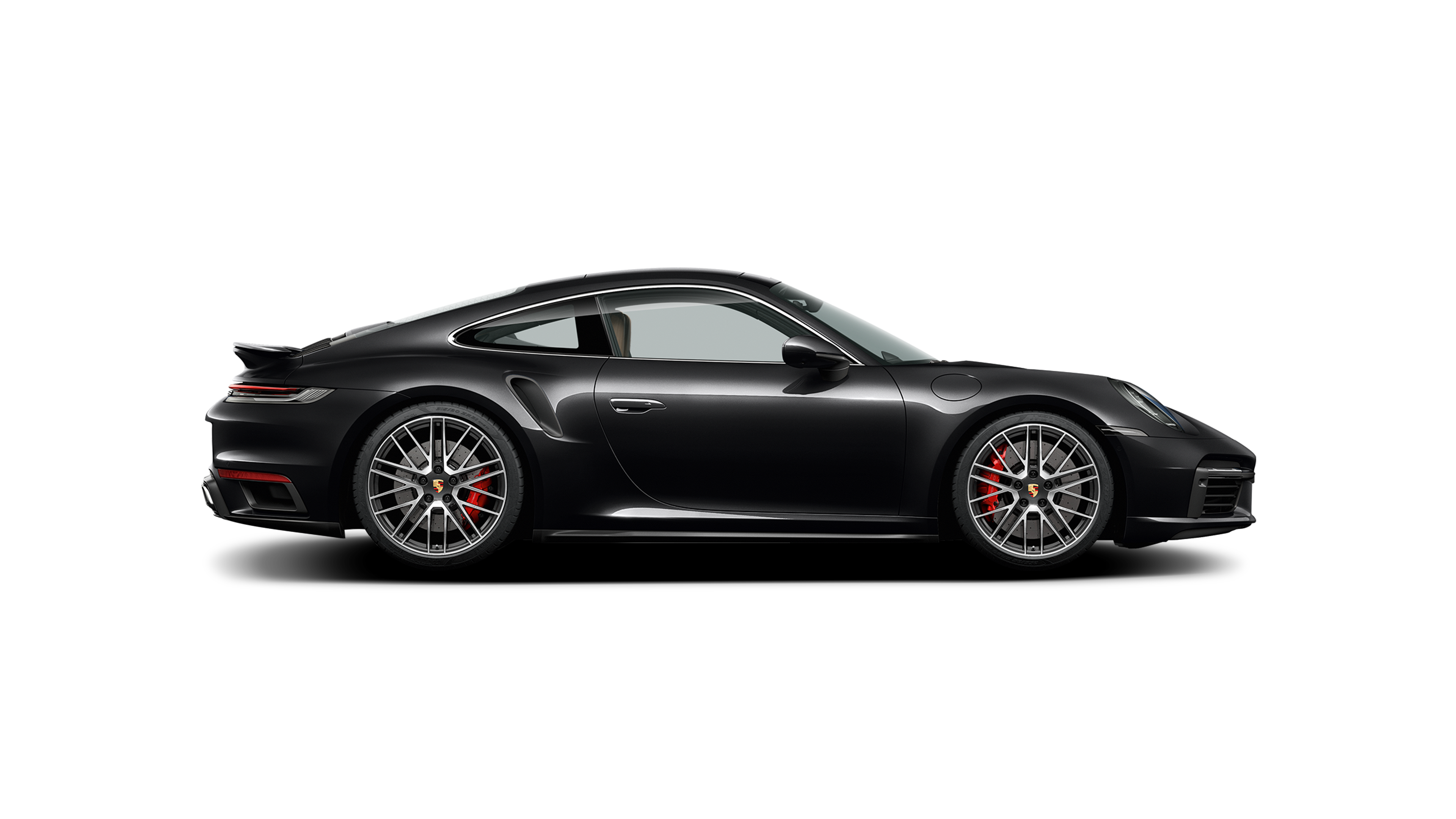
911 Turbo Concept.
Our engineers like to talk about the most perfect sports car ever. Incredible performance, whilst being comfortable and fully suitable for everyday use. The 911 Turbo models continue this philosophy.
Performance.
911 Turbo (WLTP)*
12,3 – 12,0
l/100 km
279 – 271
g/km
G
Class
911 Turbo S (WLTP)*
12,3 – 12,0
l/100 km
278 – 271
g/km
G
Class
For Porsche , the finish line is just a stepping stone in the continuous pursuit of further improvement.
- New engine generation: six-cylinder horizontally opposed engine with VTG twin-turbo
- New 8-speed
Porsche Doppelkupplung (PDK) - Optional sports exhaust system for a powerful engine sound
From every angle a traditional athletic form: every detail combines timeless design with contemporary style.
- Light strip
- Variable front spoiler
Comfort.
Everything new? Everything the same? Neither. The interior combines what has characterised the 911 Turbo for over 45 years with the possibilities of today.
- 10.9-inch touchscreen display
Porsche Connect- Wet mode
Select and configure 911 Turbo models.
911 Turbo
427 kW/580 PS
Power (kW)/Power (PS)
2,8 s
Acceleration 0 - 100 km/h with Sport Chrono Package
320 km/h
Top speed
WLTP*
12,3 – 12,0
l/100 km
279 – 271
g/km
G
Class
Height
1.303 mm
Width
1.900 mm
Length
4.535 mm
Wheelbase
2.450 mm
Technical Specs
| Number of cylinders | 6 |
| Bore | 102,0 mm |
| Stroke | 76,4 mm |
| Displacement | 3.745 cm³ |
| Power (kW) | 427 kW |
| Power (PS) | 580 PS |
| RPM point maximum power | 6.500 1/min |
| Maximum engine speed | 7.200 1/min |
| Max. torque | 750 Nm |
| RPM range maximum torque | 2.250 - 4.500 1/min |
| Max. output per liter (kW/l) | 114,00 kW/l |
| Max. output per liter (PS/l) | 155,00 PS/l |
| Top speed | 320 km/h |
| Acceleration 0 - 100 km/h with Sport Chrono Package | 2,8 s |
| Acceleration 0 - 160 km/h with Sport Chrono Package | 6,3 s |
| Acceleration 0 - 200 km/h with Sport Chrono Package | 9,7 s |
| In-gear acceleration (80-120km/h) (50-75 mph) with Sport Chrono Package | 1,7 s |
| Length | 4.535 mm |
| Width | 1.900 mm |
| Width (with mirrors) | 2.024 mm |
| Height | 1.303 mm |
| Wheelbase | 2.450 mm |
| Turning circle | 10,9 m |
| Unladen weight (DIN) | 1.640 kg |
| Unladen weight (EU)1) | 1.715 kg |
| Permissible gross weight | 2.040 kg |
| Maximum load | 400 kg |
|
Maximum permissible roof load with |
75 kg |
1) Weight is calculated in accordance with the relevant EC Directives and is valid for vehicles with standard specification only. Optional equipment increases this figure. The figure given includes 75kg for the driver
| Luggage compartment volume, front | 128 l |
| Open luggage compartment volume (behind front seats) | 264 l |
| Fuel consumption urban | 20,6 - 20,2 l/100 km |
| Fuel consumption suburb | 12,1 - 11,7 l/100 km |
| Fuel consumption extra urban | 10,3 - 10,0 l/100 km |
| Fuel consumption highway | 11,0 - 10,7 l/100 km |
| Fuel consumption combined | 12,3 - 12,0 l/100 km |
| CO2 Class | G |
| Emission standard (WLTP) | Euro 6d-ISC-FCM |
| CO2-emissions low (WLTP) | 467 - 459 g/km |
| CO2-emissions medium (WLTP) | 274 - 266 g/km |
| CO2-emissions high (WLTP) | 234 - 227 g/km |
| CO2-emissions extra high (WLTP) | 250 - 243 g/km |
| CO2-emissions combined (WLTP) | 279 - 271 g/km |
| Sound level of stationary vehicle | 93 dB(A) |
| Sound level of stationary vehicle (rpm) | 3.325 1/min |
| Sound level of passing vehicle | 72 dB(A) |
Gallery.
911 Turbo Models
911 Turbo
911 Turbo Models
911 Turbo Models
911 Turbo Models
911 Turbo Models
911 Turbo Models
911 Turbo Models
911 Turbo Models
911 Turbo Models
911 Turbo Models
911 Turbo Models
911 Turbo Models
911 Turbo Models
911 Turbo Models
911 Turbo Models
911 Turbo Models
911 Turbo Models
911 Turbo Models
911 Turbo Models
911 Turbo Models
911 Turbo Models
911 Turbo Models
911 Turbo Models
911 Turbo Models
911 Turbo Models
911 Turbo Models
911 Turbo Models
911 Turbo Models
911 Turbo
911 Turbo Models
911 Turbo
911 Turbo Models
911 Turbo Models
911 Turbo Models

Personalisation & finishing.
In the


















































































